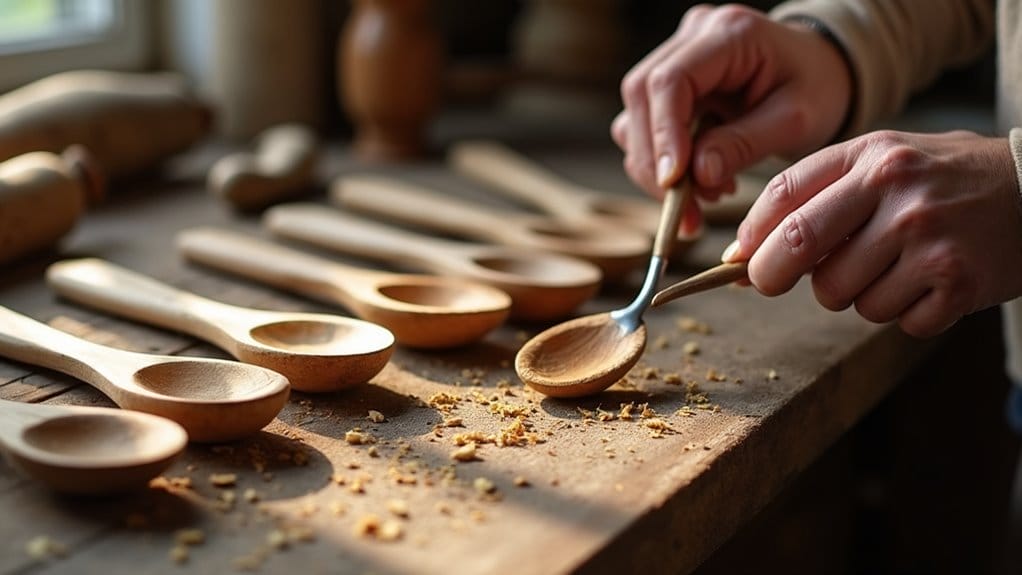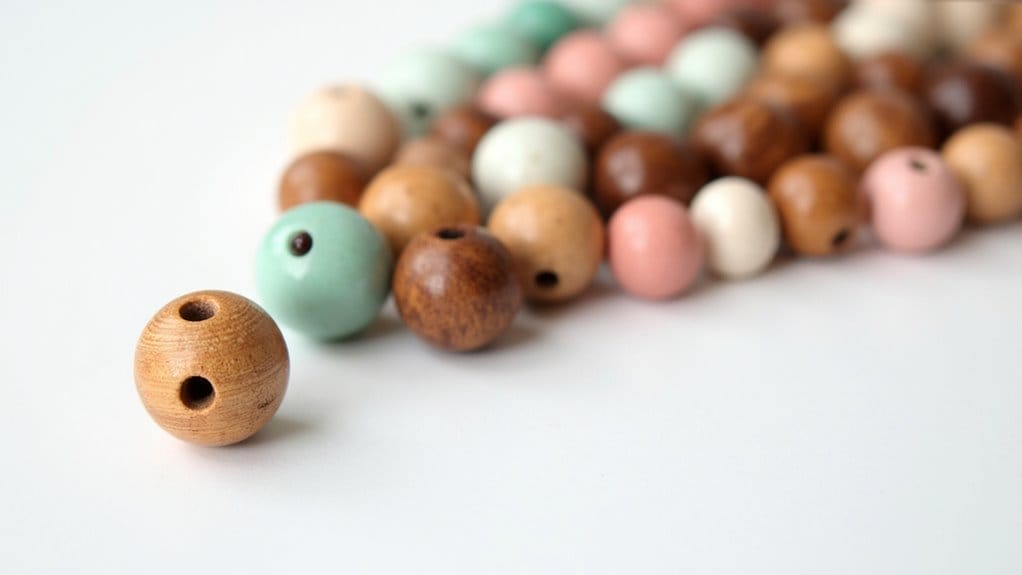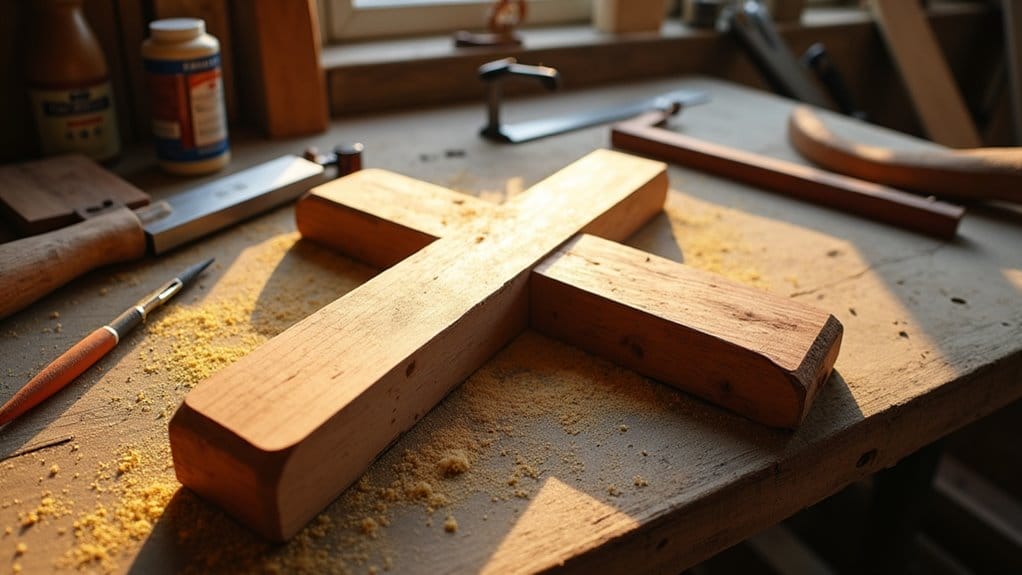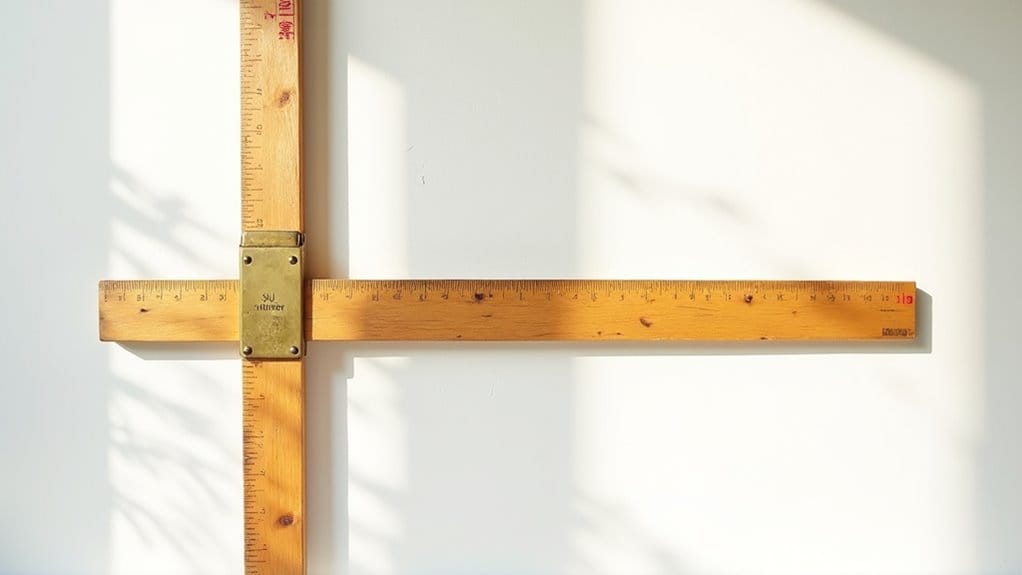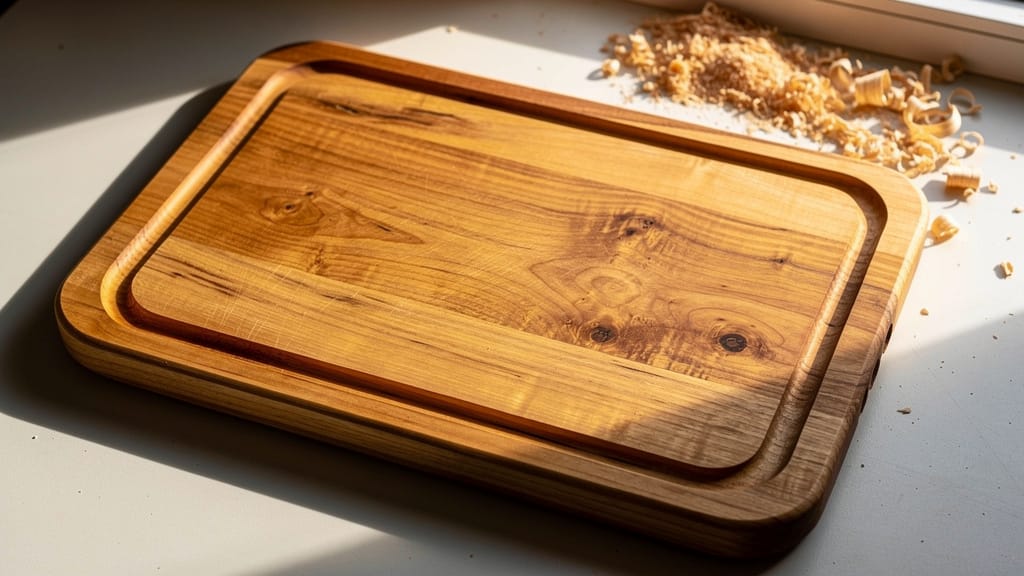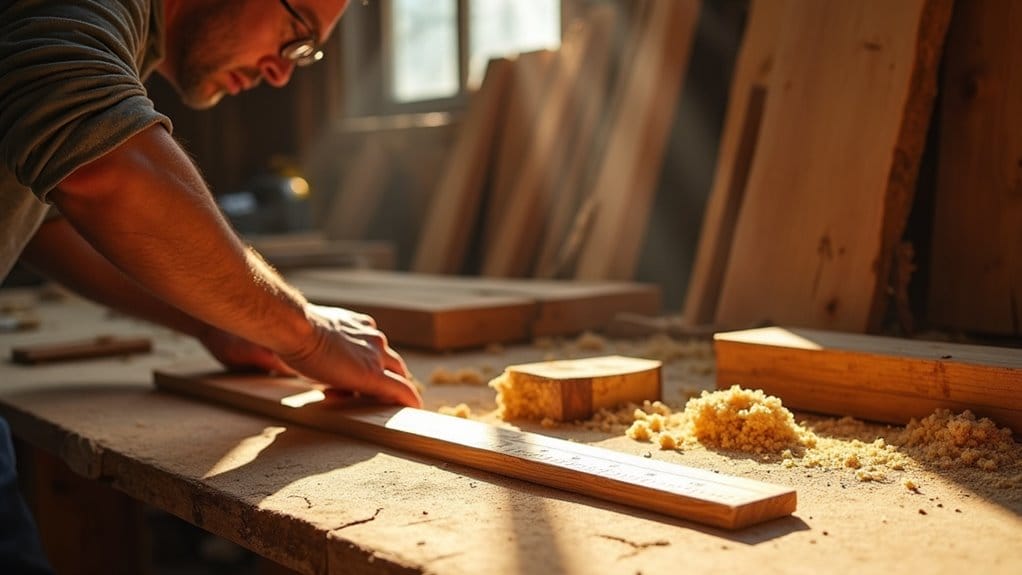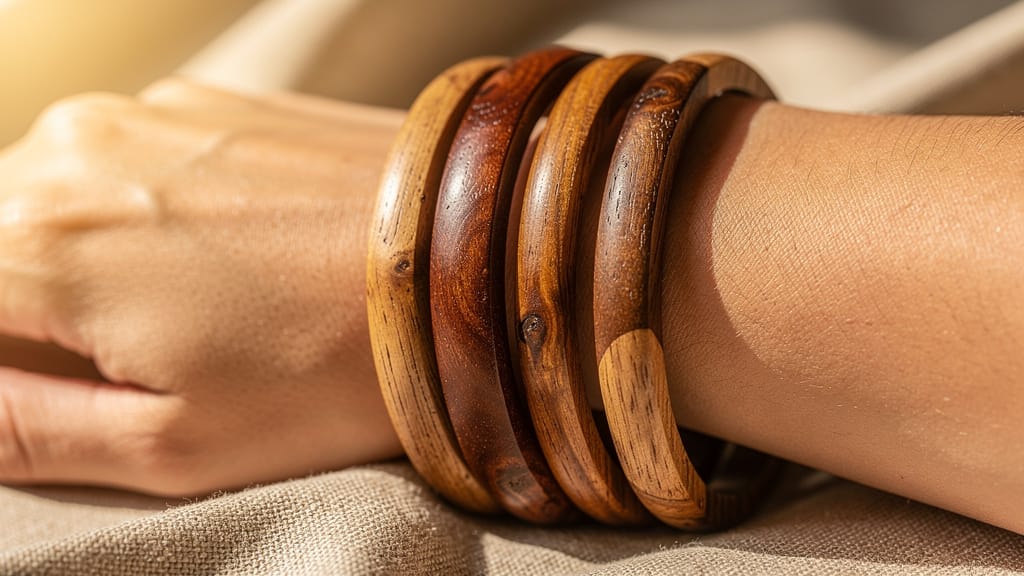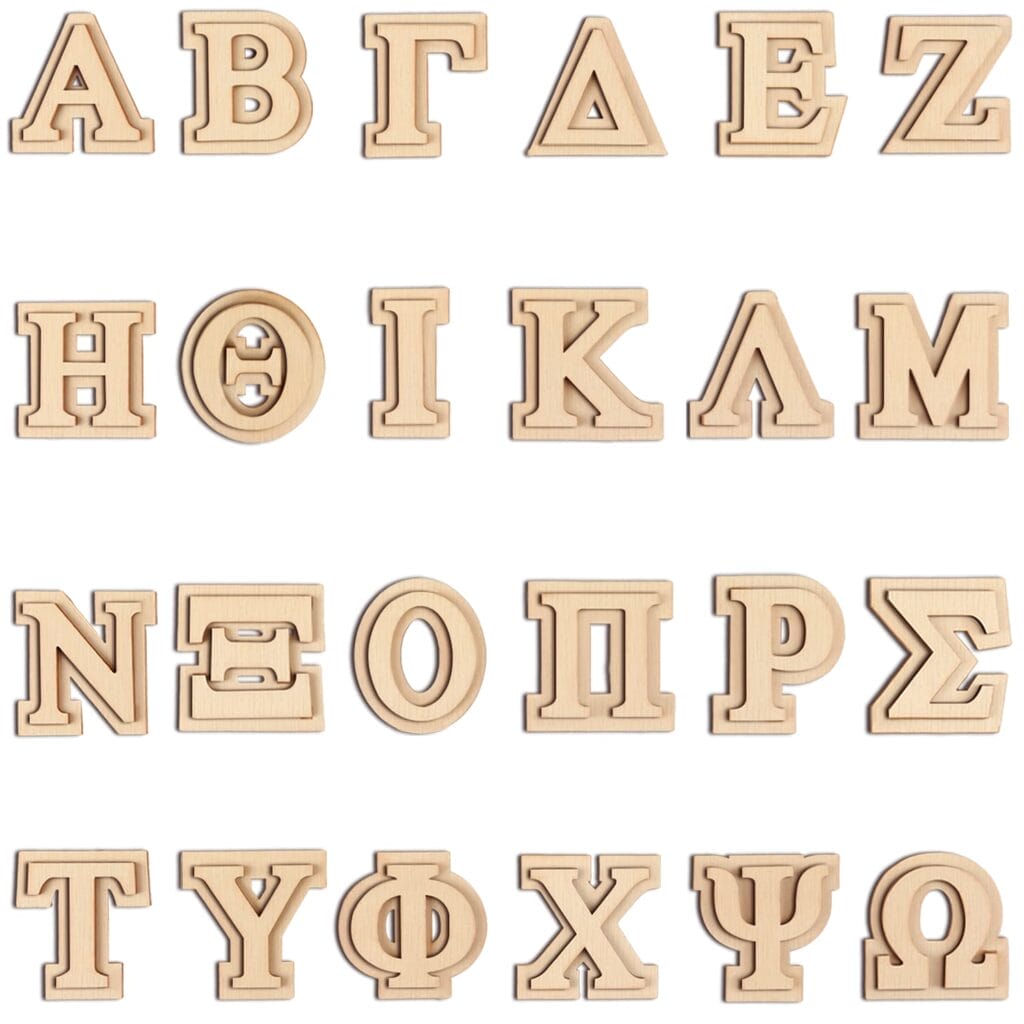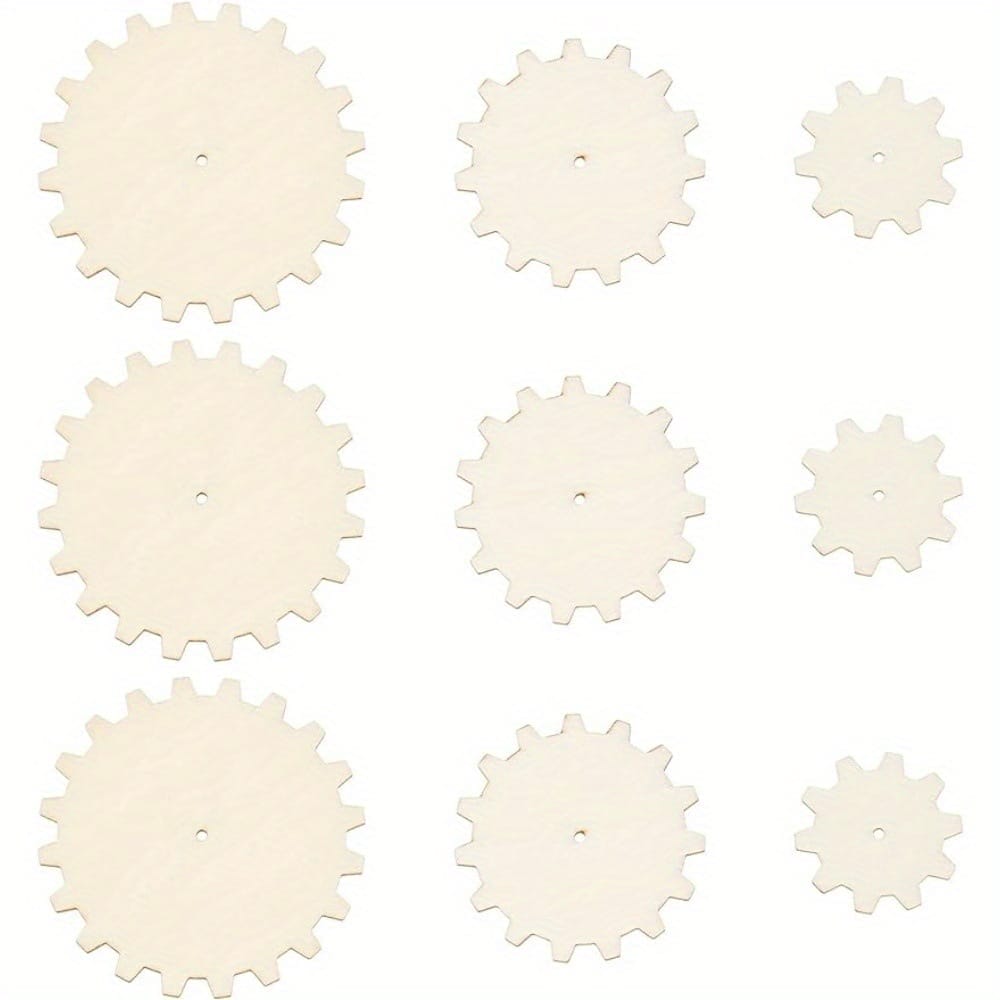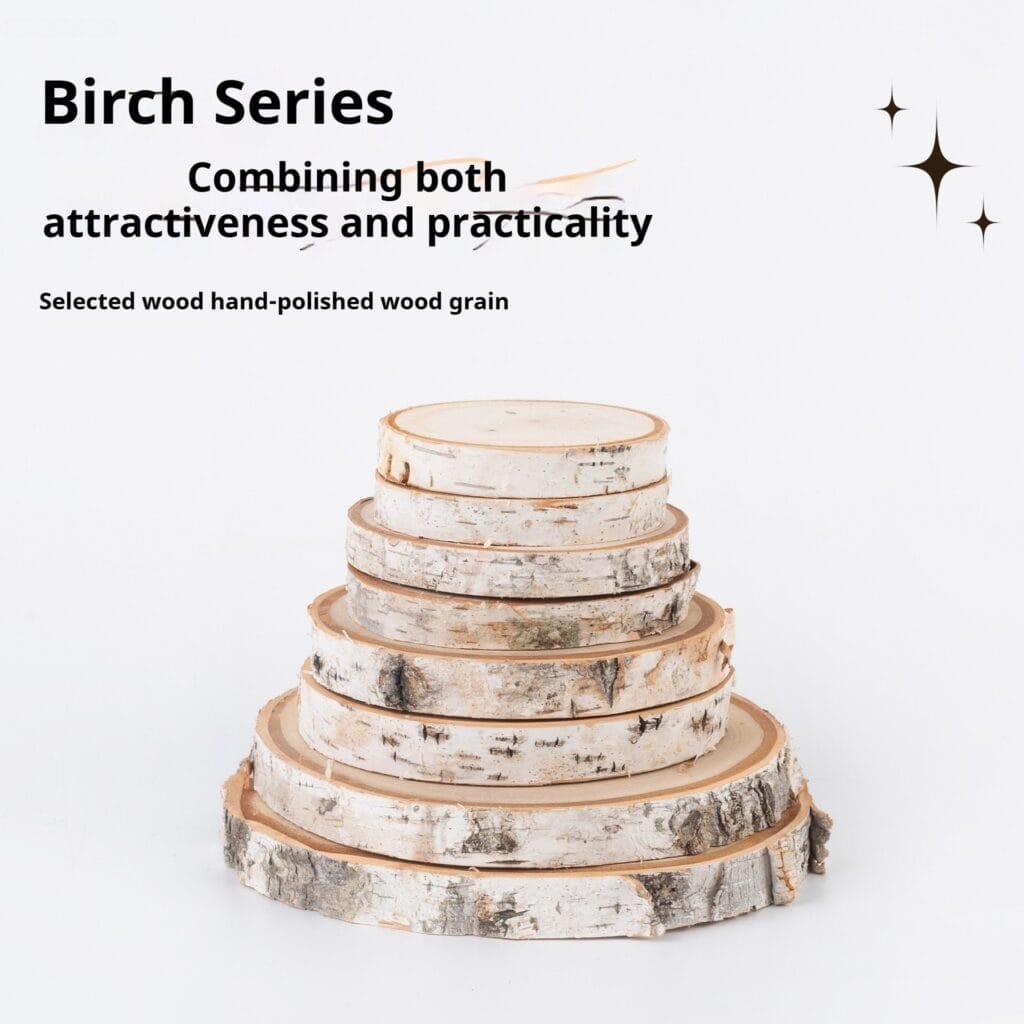You’ll notice a significant shift in how wooden letters decor has evolved from simple wall hangings to sophisticated design statements. With 68% of buyers now under 40, the market’s responding to demands for personalized, eco-conscious pieces that reflect individual style. As online sales continue to dominate at 65% of purchases, it’s clear that digital platforms are reshaping how consumers discover and select these decorative elements. Understanding these emerging patterns reveals valuable insights into where this dynamic market is headed.
Key Takeaways
- Millennial parents and Gen Z consumers dominate the wooden letters market, with 68% of purchases made by buyers under 40.
- White letters account for 45% of sales, while minimalist sans-serif fonts represent 70% of consumer preferences.
- Online retailers lead with 65% of sales, while social media platforms drive 40% of new customer acquisitions.
- Custom elements appear in 82% of purchases, reflecting strong consumer demand for personalized, story-driven wooden letter designs.
- Sustainable wooden letters from reclaimed materials show 40% growth since 2020, with consumers willing to pay premium prices.
Current Consumer Preferences in Wooden Letters Decor

Today’s wooden letter decor market is dominated by millennial parents and Gen Z consumers seeking personalized home accents, with 68% of purchases made by those under 40.
You’ll find that rustic farmhouse and modern minimalist styles lead current preferences, while custom finishes and mixed-material designs continue to gain traction among buyers.
The surge in personalization has transformed the market, as consumer data shows 82% of wooden letter purchases now involve custom elements like monograms, names, or meaningful phrases.
Demographics of Consumers: Who is Buying?
Recent market analyses reveal that Millennial homeowners and Gen-Z apartment dwellers dominate the wooden letters decor market, with 65% of purchases coming from consumers aged 25-40.
You’ll find these buyers gravitating toward decorative wooden letters for nurseries, home offices, and social media-worthy accent walls.
Women make up 78% of craft and decor purchases in this category, with a strong presence on Pinterest and Instagram.
Urban professionals earning $50,000-85,000 annually represent the core demographic, while suburban parents are the fastest-growing segment.
First-time homeowners consistently seek these items for personalization, making them a key target market.
Popular Styles and Designs: What Consumers Prefer
Contemporary wooden letter preferences lean heavily toward minimalist designs, with sans-serif fonts accounting for 70% of sales across major retailers.
You’ll find clean lines and simple aesthetics dominating the market, particularly in home offices and nurseries.
White remains the top-selling color choice, making up 45% of purchases, while unfinished wood follows at 30%.
The rustic farmhouse trend continues to drive demand for distressed finishes and natural wood grains.
Size preferences have shifted toward larger statement pieces, with 12-24 inch letters seeing a 40% growth in sales compared to last year’s figures.
The Influence of Personalization on Buying Decisions
Beyond standard design preferences, personalization has emerged as a leading factor in wooden letter purchasing decisions, with 85% of consumers indicating they’re more likely to buy customizable options.
You’ll find that today’s buyers want to add a personal touch to their wood letters through custom finishes, unique font selections, and meaningful arrangements.
Market data shows that 73% of customers prefer to preview their personalized designs before purchasing, while 62% are willing to pay premium prices for customization options.
When you’re selecting wooden letters for your space, you’ll notice vendors now prioritize user-friendly customization tools, making it easier to visualize and create your perfect personalized piece.
Key Trends Shaping the Wooden Letters Decor Market

The wooden letters decor market is experiencing a transformative shift as you’ll find more consumers gravitating toward personalized, handcrafted pieces that tell unique stories. This movement not only reflects a desire for individuality but also a growing appreciation for artisanal craftsmanship. As a result, many are exploring new wood wall decor ideas that incorporate custom designs and meaningful messages, transforming their living spaces into personal narratives. This trend signifies a broader cultural shift towards valuing experiences and personal connections over mass-produced items.
You’re seeing a significant uptick in demand for sustainable wooden letters made from reclaimed materials and eco-certified woods, with market data showing a 40% increase in eco-friendly purchases since 2020.
The integration of smart lighting and app-controlled features into wooden letter displays is emerging as a game-changing trend, blending traditional craftsmanship with modern technology to meet your contemporary decor needs.
Rise of Customization and Handmade Products
As consumers increasingly seek unique home decor items that reflect their personal style, customized and handmade wooden letters have emerged as a dominant market trend. These personalized pieces not only add a touch of individuality to living spaces but also serve as memorable gifts for special occasions. Retailers are increasingly turning to wholesale cursive wooden letters to meet the growing demand, allowing them to offer a wide variety of styles and finishes. This trend highlights the importance of craftsmanship and personalization in today’s home decor market.
You’ll find artisans and manufacturers responding to this demand with personalized options that go beyond standard offerings.
- Custom wood finishes and textures now account for 45% of wooden letters and numbers sales
- Hand-painted and hand-carved designs represent a 32% market share
- Made-to-order dimensions and specifications make up 28% of current purchases
This shift toward customization has transformed the market, with consumers willing to pay premium prices for bespoke wooden letter designs that guarantee originality and craftsmanship in their home decor choices.
Sustainability and Eco-Friendly Materials in Consumer Choices
Growing environmental consciousness has revolutionized the wooden letters decor market, with 68% of consumers now prioritizing sustainable and eco-friendly materials in their purchasing decisions.
You’ll find reclaimed wood, bamboo, and FSC-certified materials leading the eco-friendly trend, with sales increasing 42% year-over-year.
Manufacturers are responding by adopting zero-waste production methods and using water-based, non-toxic finishes. Natural finishes and raw wood textures have surged in popularity, accounting for 73% of sustainable wooden letter purchases.
Local sourcing has become vital, with 56% of buyers choosing products made within 100 miles of their location to reduce carbon footprint and support regional economies.
Integration of Technology: Smart Decor Solutions
Modern technology has revolutionized wooden letter decor, with smart lighting integration leading the transformation. You’ll find cutting-edge innovations transforming traditional wooden letters into interactive home accessories that sync with your smart home ecosystem.
Key tech integrations include:
- LED-embedded wooden letters controllable via smartphone apps, offering customizable colors and patterns.
- Voice-activated lighting systems compatible with Alexa and Google Home.
- Motion-sensor illuminated letters that respond to room activity.
Market data shows a 47% increase in smart wooden letter purchases since 2021, with millennials driving demand for tech-enhanced decor.
This fusion of traditional craftsmanship with modern technology continues to reshape the wooden letter market.
Distribution Channels for Wooden Letters Decor
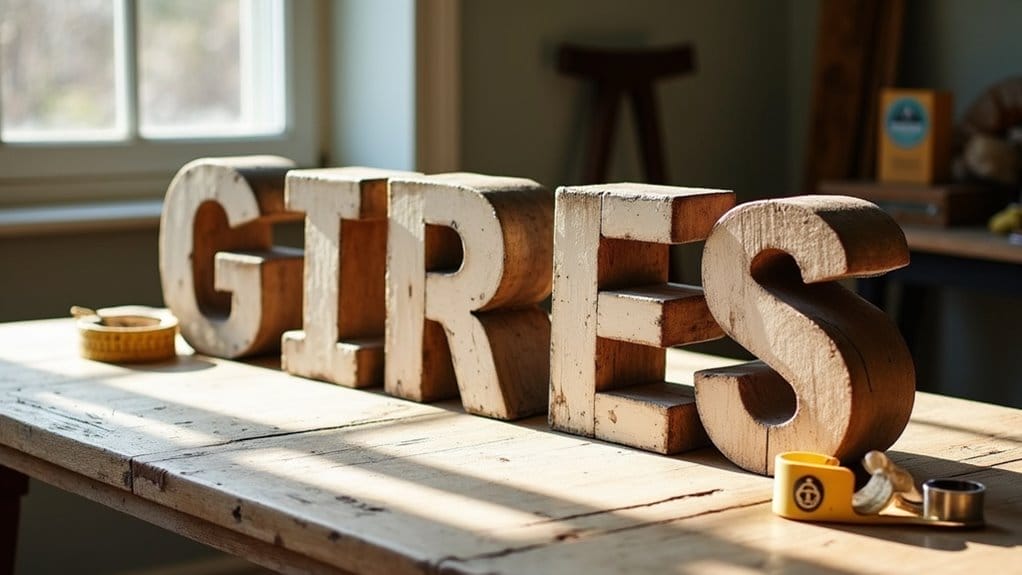
Today’s wooden letters decor market features multiple distribution channels that you’ll find increasingly interconnected, with online retailers claiming the largest share at 65% of total sales.
You can discover unique wooden letter designs through brick-and-mortar craft stores and local artisan fairs, which maintain a steady 25% market share by offering personalized shopping experiences and immediate product availability.
Social media platforms, particularly Instagram and Pinterest, have transformed into powerful sales drivers, with influencer partnerships generating 40% of new customer acquisitions in the wooden letters decor segment.
Online Retailers: The Growth of E-Commerce
The explosive rise of e-commerce has revolutionized how consumers shop for wooden letter décor, with digital marketplaces capturing over 40% of total sales in this niche by 2023.
You’ll find an ever-expanding selection of customizable options across major platforms, driven by sophisticated algorithms and user preferences.
Key growth factors in online wooden letter sales:
- Mobile shopping adoption has increased 225% since 2020
- Social media platforms now drive 35% of wooden décor discoveries
- Direct-to-consumer brands have reduced prices by eliminating middlemen
You’re now able to compare styles, prices, and reviews instantly, making e-commerce the preferred channel for wooden letter purchases.
Brick-and-Mortar Stores: The Role of Local Shops and Craft Fairs
Despite e-commerce’s dominance, local brick-and-mortar stores and craft fairs still command 35% of wooden letter décor sales, offering unique advantages that digital platforms can’t replicate.
You’ll find that specialty home décor boutiques and artisan markets excel at showcasing handcrafted wooden letters through tactile displays and personalized consultations. These unique offerings not only enhance the shopping experience but also provide inspiration for creating custom designs. Many boutiques even host workshops where you can learn to create your own diy wooden letters for events, allowing you to add a personal touch to any celebration. This hands-on approach fosters creativity and community, making each piece truly one-of-a-kind.
Local shops typically feature curated collections from regional craftsmen, while seasonal craft fairs connect you directly with makers.
Market data shows customers value the ability to inspect wood quality, compare finishes, and receive instant design advice.
These physical retail spaces also serve as trend-spotting hubs where you can discover emerging styles and creative letter arrangements firsthand.
Social Media and Influencer Marketing: Driving Sales and Awareness
Modern social media platforms have revolutionized wooden letter décor marketing, with Instagram and Pinterest leading 65% of online engagement for this category. Influencers showcase creative applications, driving consumer interest and sales through authentic content creation.
Key social media strategies driving wooden letter décor sales:
- Lifestyle influencers featuring custom nursery designs achieve 3x higher conversion rates.
- DIY content creators demonstrating installation techniques generate 78% more saves and shares.
- Wedding planners’ styled shoots featuring oversized wooden monograms reach 2.5M monthly viewers.
You’ll find hashtags like #WoodenLetterDecor and #CustomNameSign trending regularly, with user-generated content fueling market growth and inspiring new design applications.
Challenges in the Wooden Letters Decor Market

The wooden letters decor market faces fierce competition from digital signage and alternative wall art options that often undercut traditional wood pricing by 30-40%.
You’ll find supply chain disruptions impacting material costs, with sustainable wood sourcing becoming increasingly difficult as global demand rises and environmental regulations tighten.
Meeting consumer expectations for both craftsmanship and affordability presents a significant challenge, as market research shows 65% of buyers expect premium quality but aren’t willing to pay more than mass-produced alternatives.
Competition from Alternative Decor Options
Several alternative decor options pose significant competition to wooden letter decorations in today’s home styling market.
You’ll find these competing products gaining market share as consumers seek versatility and modern aesthetics.
Leading alternatives include:
- Neon LED letter signs, which have seen a 45% growth in sales since 2021
- Metallic wall letters offering industrial and contemporary appeal, capturing 30% of the letter decor market
- Vinyl lettering and decals providing cost-effective, easy-to-change solutions with customization options
These alternatives often deliver lower price points and simpler installation, making them increasingly attractive to budget-conscious homeowners and renters seeking temporary decor solutions.
Supply Chain Issues and Material Sourcing
Recent disruptions in global wood supply chains have greatly impacted wooden letter manufacturers, with raw material costs surging 32% since 2022.
You’ll notice these increases reflected in retail prices, as manufacturers struggle to source quality hardwoods like maple and oak.
To combat shortages, you’re seeing producers pivot to sustainable alternatives like bamboo and reclaimed wood.
They’re also establishing direct relationships with local lumber suppliers, cutting out middle-men to reduce costs.
Smart manufacturers are investing in inventory management systems to forecast material needs and maintain buffer stock, ensuring they won’t face production delays that could cost them market share.
Navigating Consumer Expectations and Quality Standards
Rising consumer expectations for wooden letter decor have created a complex balancing act for manufacturers in 2024.
You’ll need to meet increasingly stringent quality benchmarks while maintaining competitive pricing in today’s market.
- Quality demands now extend beyond aesthetics – 78% of buyers expect sustainable materials, precise craftsmanship, and durable finishes.
- Custom sizing and personalization requests have jumped 45% since 2023, requiring flexible production capabilities.
- Third-party quality certifications are becoming standard, with 62% of consumers checking for safety and environmental compliance before purchasing.
Understanding these evolving standards is vital as you navigate the competitive wooden letters market.
Future Outlook for Wood Letters Decor

The wooden letter decor market will likely see 12% growth by 2025, driven by personalized home design and social media influence.
You’ll notice brands shifting toward eco-friendly materials and smart manufacturing processes to meet growing consumer demand for sustainable decor options.
Digital customization tools and augmented reality previews will transform how you shop for wooden letters, making it easier to visualize and purchase these decorative pieces for your space.
Predictions for Market Growth and Trends
Market analysts predict wooden letter décor will experience significant growth through 2025, driven by increasing demand for personalized home accessories and DIY interior design projects.
You’ll see these key market developments emerge:
- Online sales channels will dominate, with e-commerce platforms expected to capture 65% of wooden letter décor sales by 2024.
- Sustainable and eco-friendly wooden letter products will command premium prices, growing at 12% annually.
- Customization technology will advance, allowing for more intricate designs and finishes, pushing the market value to $2.3 billion globally.
Smart manufacturers are already investing in digital customization tools and sustainable sourcing to capitalize on these trends.
Opportunities for Brands to Innovate and Engage Consumers
While consumer preferences continue evolving, brands in the wooden letter décor space have unprecedented opportunities to revolutionize their offerings and capture market share.
You’ll see companies investing in sustainable sourcing, incorporating smart lighting features, and developing modular designs that allow for easy customization.
To stay competitive, you’ll need to focus on digital integration, offering AR previews and mobile apps for virtual room planning.
Consider developing eco-friendly finishes, introducing limited-edition collaborations with artists, and creating subscription-based personalization services.
Frequently Asked Questions
How Do You Protect Wooden Letters From Warping in Humid Conditions?
You’ll prevent warping by sealing your wooden letters with moisture-resistant polyurethane, storing them in climate-controlled spaces, and using stabilized wood. Today’s top-rated sealants offer 99% protection against humidity-related damage.
Can Wooden Letters Be Safely Used in Outdoor Home Decor?
You’ll want to use weather-resistant woods like cedar or teak for outdoor letters. For best results, seal them with marine-grade polyurethane and mount under covered areas. Today’s outdoor-rated sealants offer 3-5 years of protection.
What Tools Are Needed to Create DIY Wooden Letter Decorations?
You’ll need a jigsaw or scroll saw for cutting letters, sandpaper for smoothing edges, wood stain or paint, brushes, and a pencil for tracing. Power drills and wood glue are popular finishing tools.
Are There Eco-Friendly Alternatives to Traditional Wooden Letters?
You’ll find sustainable options like bamboo letters, reclaimed wood pieces, and cork materials trending now. These eco-conscious alternatives are gaining 40% more market share annually, meeting your green décor needs perfectly.
How Long Does It Typically Take to Custom-Make Personalized Wooden Letters?
You’ll typically wait 3-7 business days for custom wooden letters, though rush orders are available. Market data shows 60% of crafters now offer 48-hour production, meeting growing demand for quick personalization turnaround times.
Conclusion
As you navigate the wooden letters decor market, you’ll find it’s increasingly driven by younger consumers’ preferences for sustainable, minimalist designs. You’re looking at a market where online sales dominate 65% of transactions, and social media greatly influences purchasing decisions. To stay competitive, you’ll need to focus on personalization options, eco-friendly materials, and strong digital presence. The market’s trajectory suggests continued growth in customizable, artisanal wooden letter products.






